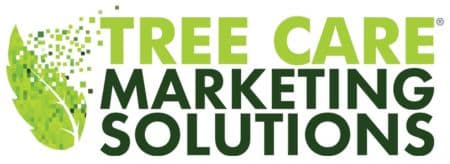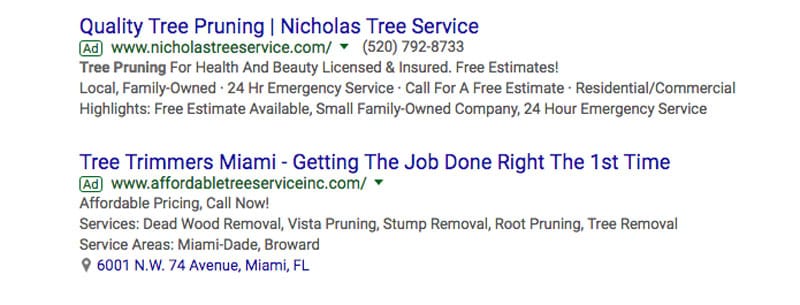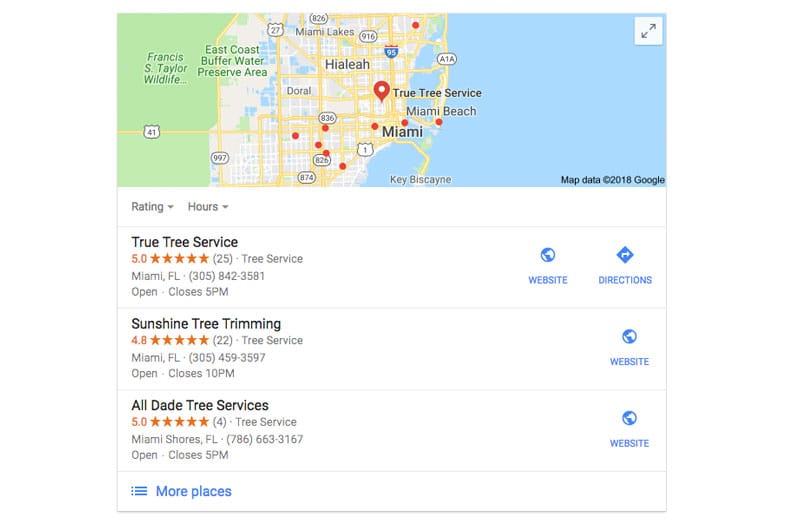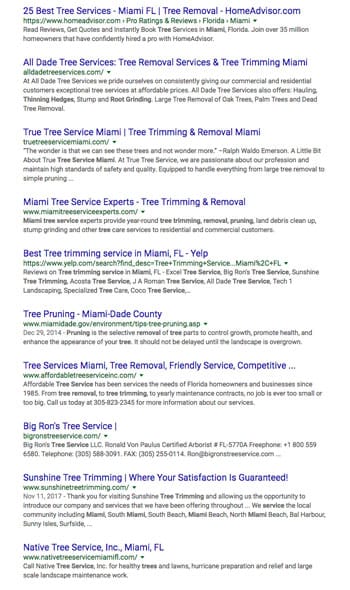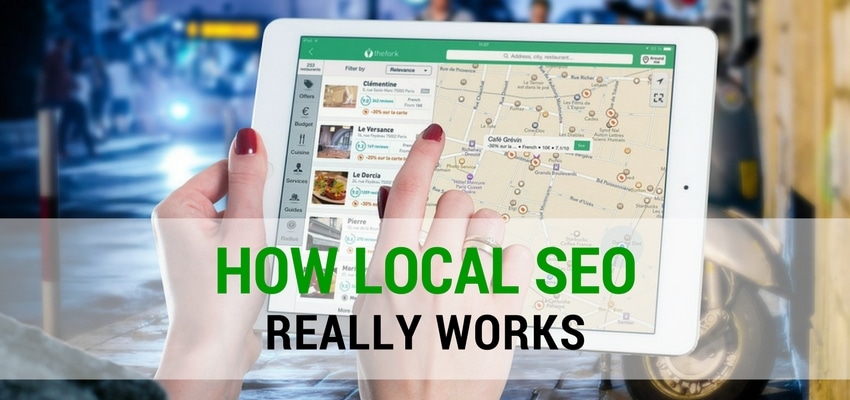
How Local SEO Really Works in the Tree Care Industry
The other day I got a phone call from a client saying that “my site isn’t ranking for ‘tree pruning’ in Miami”.
Ummm, well... The client is located in Orlando.
However, they want to appear on the first page of the Google search results whenever anyone searches for ‘tree pruning’ anywhere in Florida! And they believe that if I just did “better SEO” on their site, they’d rank better.
Which got me thinking about similar conversations I’ve had over the years with companies that are trying to rank for specific keywords in specific locations, regardless of where they’re actually located.
In some respects, it’s like they say in Maine - “you can’t get there from here.”
Why? Because Google (and the other major search engines) is designed to show local results when someone is searching for a local service or product.
Let’s take a look at the search engine results pages (SERPs).
Ads Show At The Top Of The Page
At the top you have up to three ads (sometimes four). You have to pay to show up there.
If you have enough money and time to set up your AdWords campaigns properly, you can show up there for pretty much any keyword you want in just about any location. It’s going to cost you (probably a lot!), but it can be done.
The Local 3-Pack Is Next
Next, we have the local 3-pack (also called map pack or local pack). Until recently, you could not pay to appear there. But now we're starting to see a 4th listing, shown at the top of the map pack, with a paid placement from a Google Local Services ad. That program isn't yet available in all geographic areas but it's worth considering if you're having difficulty getting into the local pack.
It pulls information from Google My Business pages and shows the three verified local companies nearest you.
To appear there you must have a verified local business address (not a PO Box or one of those mailbox suites) and an optimized Google My Business page. If you’re not physically located in the town or city, you cannot show up in the local 3-pack for that town or city if there are other companies who are (even if they're not as good as you).
Pretty simple. But this is where business owners want to show up so you'll sometimes find them creating multiple spam Google My Business (GMB) pages with addresses in different locations. Do NOT do this. It's easy to report a fake GMB page and get it taken down - sooner or later it will catch up with you.
Now For The Organic Results
Finally, we get to the organic (non-paid) search results. In the tree care industry, the top 3 to 6 spots are usually dominated by Home Advisor, Angie’s List, Yelp, Thumbtack, BBB and perhaps a local industry directory. Those are huge sites with a ton of user-generated, local content - trust me, the average tree care company can't compete with them.
So that means you have 4 to 7 spots on the first page in which your tree service website could be shown. And you likely have pretty fierce competition for those limited spots from other local businesses who want to show up for the same things you do.
How Local Search Works
How does Google (and the other search engines) decide which websites to show in those limited organic search results?
It's all about search intent
The search engine algorithm decides what the searcher is really looking for. Gone are the days of taking the words a searcher types into the search bar and simply looking for websites with multiple mentions of those words (which is why keyword stuffing no longer works). Instead, Google tries to decipher the searcher’s intent and then find sites that have content related to the general concept the person is looking for.
For example, if someone in Miami is looking for “tree pruning”, Google makes a few assumptions.
First, the search results should be specific to Miami. Even if the person didn’t explicitly say “tree pruning in Miami”, Google figures that tree pruning is a local service, just like “taxi” or “dry cleaning”, and so it will return results that are specific to Miami.
Second, Google assumes the person is probably searching for a business that can prune their tree, but they could also be looking for tree pruning advice, costs, techniques, tools, or anything else related to tree pruning. If the search was for “tree pruning company” or “tree pruning business” then it’s much clearer that the search engine results page should show local tree pruning companies.
No one (except some of the folks at Google) knows exactly how the search algorithm works. SEO experts try to reverse engineer it and then share their research findings with the SEO community.
Keyword stuffing doesn't work
The description above is the latest thinking on SEO but it’s always evolving. What worked yesterday may no longer work today.
Take the case of keyword stuffing (putting a specific keyword on a webpage as many times as possible). It used to be considered state-of-the-art SEO but will now get your website penalized rather than promoted in the search results. But clients still want me to “just put that word in a few more times so the page will get found by Google.”
What Can You Do To Get Found In Local Searches?
First, understand how the local search algorithm does and does not work.
You are not truly a “local” business
The problem with tree care is that it's a "service area business" (SAB) in which you go to your customers, rather than having a bricks and mortar location that customers come to. You cover an area that could be over 100 miles from edge to edge.
Google is going to show your GMB page and search listing to people who are in close proximity to your physical business address, not necessarily to those within your larger service area.
#1 - Focus on GMB
Still, having an optimized GMB page is the biggest bang for your buck right now. It's well worth taking time to verify and optimize your Google My Business page (it’s free!) so you show in the local 3-pack.
Publish a weekly post and upload images or videos regularly. Respond to customer questions in the Q&A section.
#2 - Optimize Your Website
Then look at your website. Instead of trying to optimize it for the major keywords in your industry and location (e.g., “tree removal Chicago” or “tree trimming Minneapolis”), target medium tail keywords. These are words and concepts related to that primary keyword but having less reach and less competition. If it’s done well (e.g., using multiple different but related keywords, but without overdoing it), Google will show that page for searches on that term AND tons of similar keywords.
You can also create sections of your website that are targeted at specific towns, neighborhoods, counties, etc. Just be careful with this - don't copy and paste the same information but only change the location name. Each page should be unique and valuable to residents in that location. It's a lot of work to do this well so start with only a couple of pages and then check your analytics over time to see how much traffic you're getting and how well the pages are converting.
Then What?
SEO is an ongoing process – it’s definitely not a “one and done” job. It takes consistent effort over the long term to maintain results. For example:
- Check your analytics regularly for downward movement on specific pages
- Take a look at older blog posts and pages to see if the SEO needs to be updated
- Keep putting out new, well-optimized content on locally-relevant topics
And if you’re located only in Orlando, don’t expect to show up in the local organic search results for Miami any time soon.
Discover [OneThing] Each Week That Will Grow Your Business
Each Tuesday I'll send you [OneThing] you can do online to get more customers and grow your business. No fluff. No BS. Just one simple, actionable tip that will make a real difference to your business.
